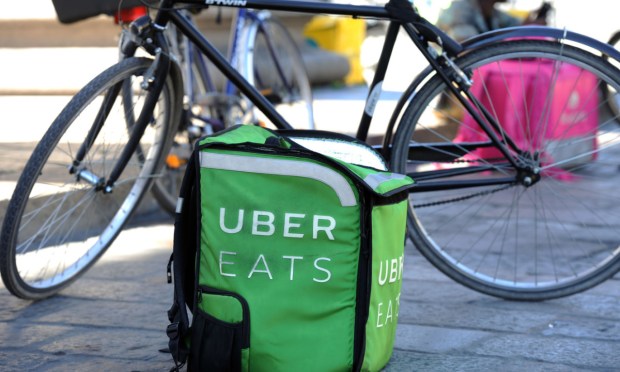Uber Leverages Platform to Cross-Sell Consumers on Food Delivery

Uber Eats may still be behind DoorDash when it comes to U.S. food delivery sales, but it has one key advantage when it comes to marketing to consumers — the rest of Uber’s platform.
Take, for instance, one PYMNTS employee’s recent experience. After getting an Uber ride from the airport to their hotel, they checked in and, nearly immediately afterwards, received a promotional email from Uber with the subject line, “Long flight? Grab a bite.” In the body of the email, the platform states, “You’ve arrived!” and advertises Uber Eats’ offerings in the area.
This marketing shows that Uber is taking advantage of its multi-service platform to drive sales, leveraging its customer data from the Rides vertical to identify and take advantage of occasions to sell consumers on its Eats offerings. These integrations create a seamless cross-category experience, all while making payments invisible, charging purchases to consumers’ stored credentials linked with their Uber accounts.
Moreover, Uber is trying to boost these cross-selling capabilities with its platform-wide membership program, Uber One, which offers both fee-free Uber Eats deliveries and discounted rides, among other perks.
“Our membership program, we think, over a period of time, is just mathematically going to drive higher frequency across the business. … The incrementality generally is higher for delivery than mobility,” Uber CEO Dara Khosrowshahi told analysts on the company’s last earnings call. He added that the company can “cross-sell” consumers “in a way that no one else can.”
Still, overall, Uber lags behind DoorDash when it comes to food delivery, according to the PYMNTS Provider Ranking of Aggregator Apps. The ranking, based on a range of factors including channel coverage, recent downloads, monthly average users, sessions per user and average session length, has DoorDash in the No. 1 spot with 96 points, while Uber Eats remains at No. 2 with 92 points.
To an extent, DoorDash is trying to do the same, adding new categories to drive platform-wide sales, especially with members of its DashPass subscription offering, but given that these remain for the most part limited to on-demand delivery occasions (with the exceptions of features such as nationwide shipping and returns), it does not have as wide a scope.
“For us the way we think about DashPass is, anything that you want in your city, you could get it for $10 a month, whether it’s pet food, whether it’s retail, whether it’s grocery, whether it’s convenience and that’s a very compelling value proposition for us,” DoorDash Chief Financial Officer Ravi Inukonda told analysts on the company’s last earnings call.
Across industries, PYMNTS research reveals that businesses that can engage across as disparate pillars of the ConnectedEconomy™ — how they eat, shop, pay, live, travel, bank, work, communicate, have fun and stay well — outperform those that stay limited to just one. Uber’s strategy to engage consumers across the travel, shop and eat pillars — and to integrate the experience across these pillars with targeted cross-selling occasions — could, down the line, go a long way toward closing the gap with DoorDash.
